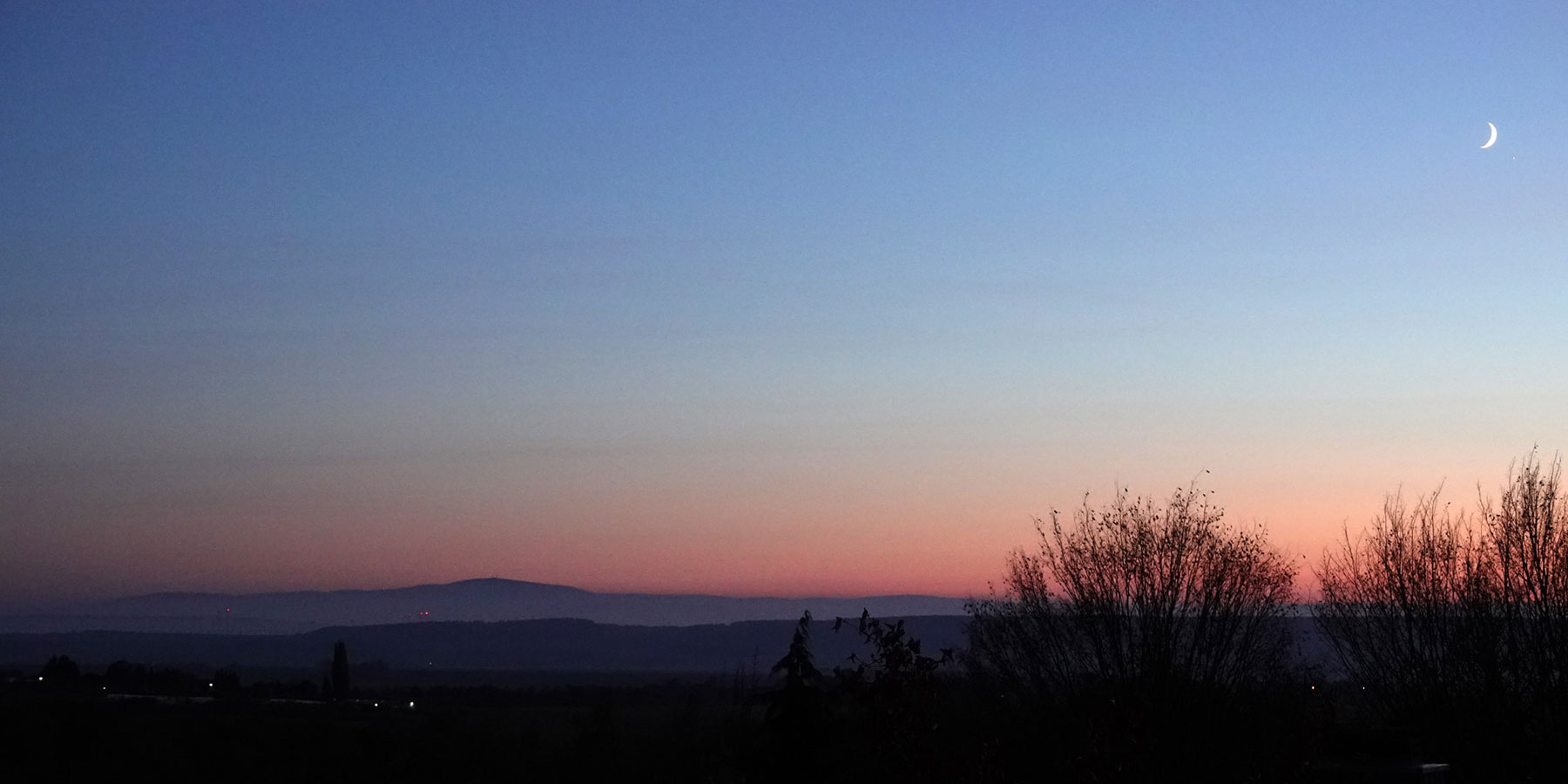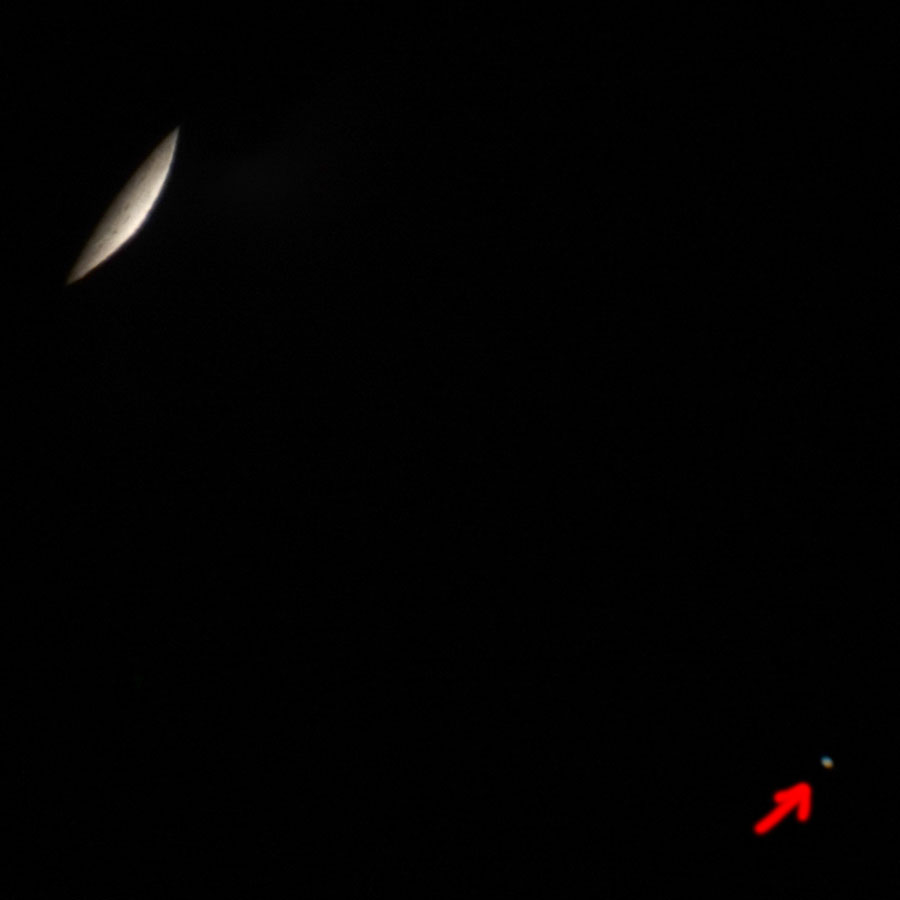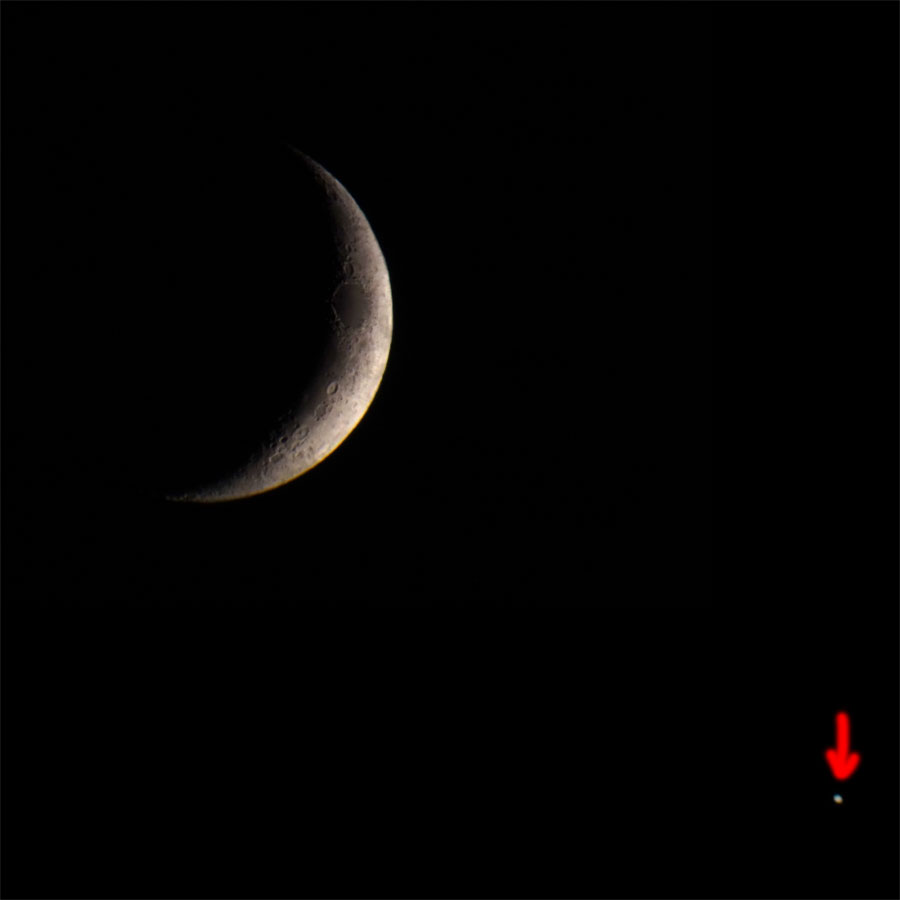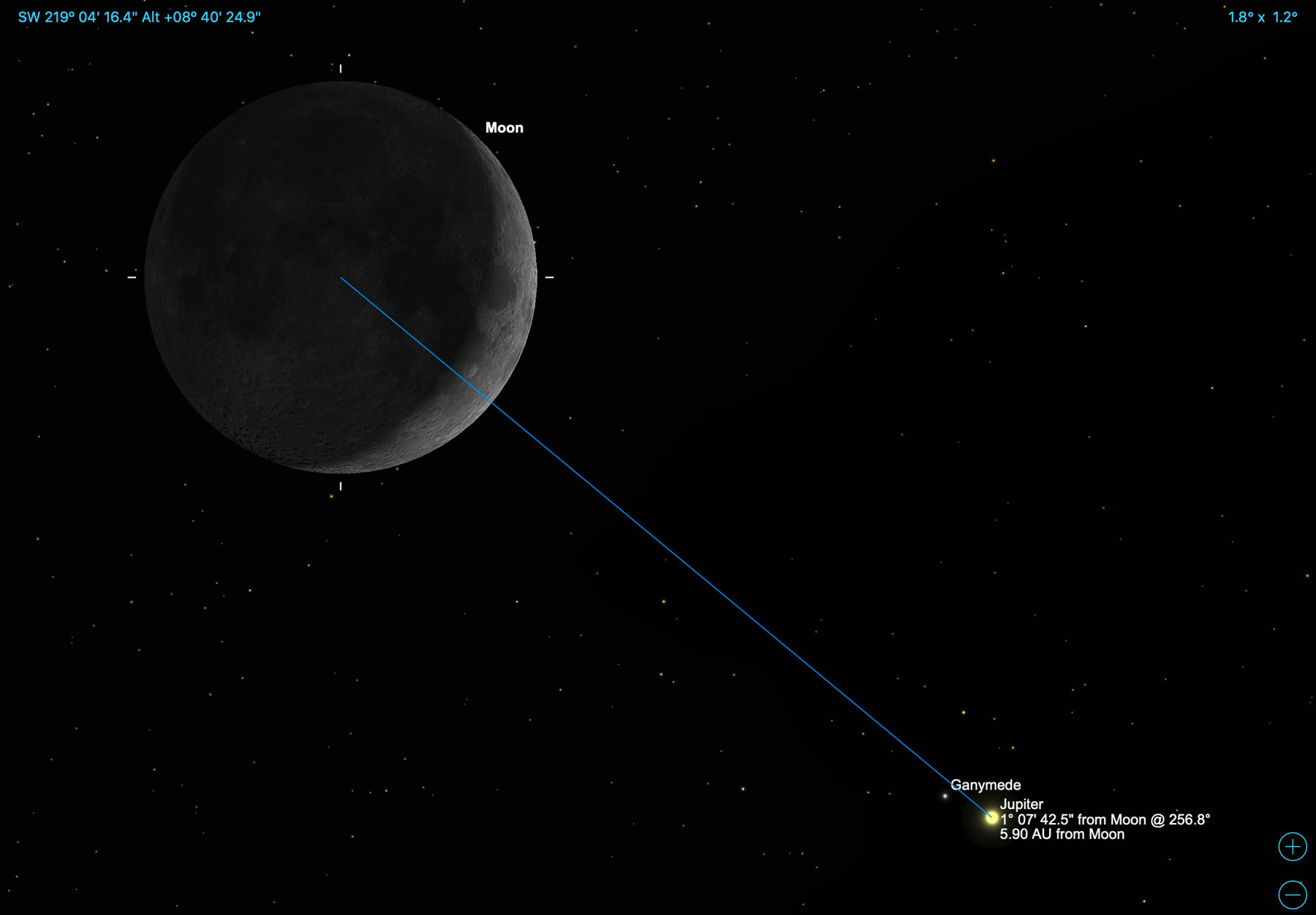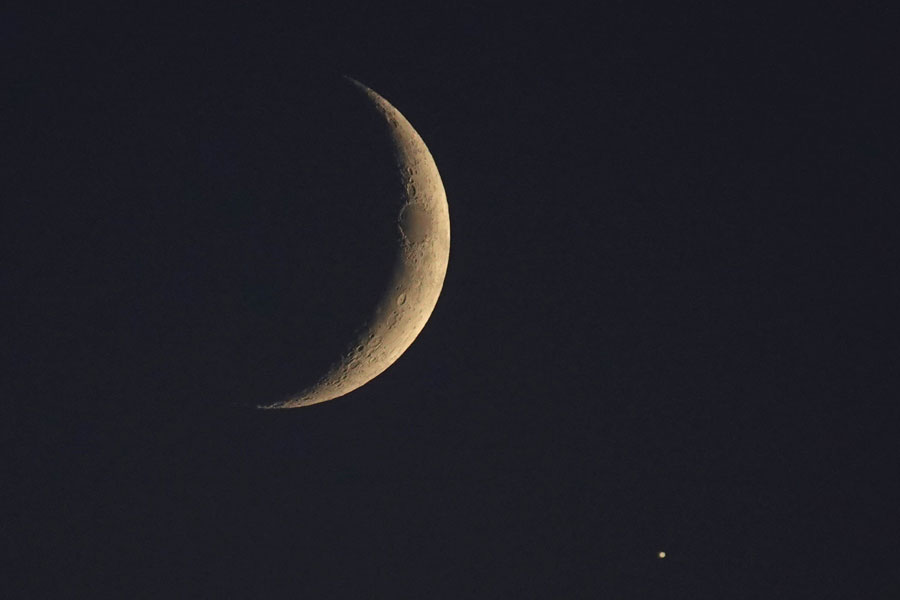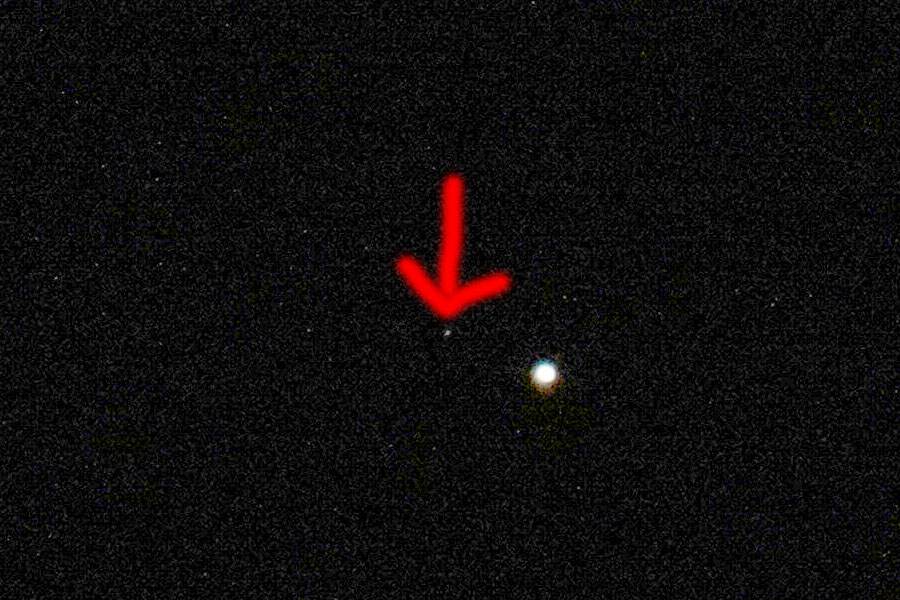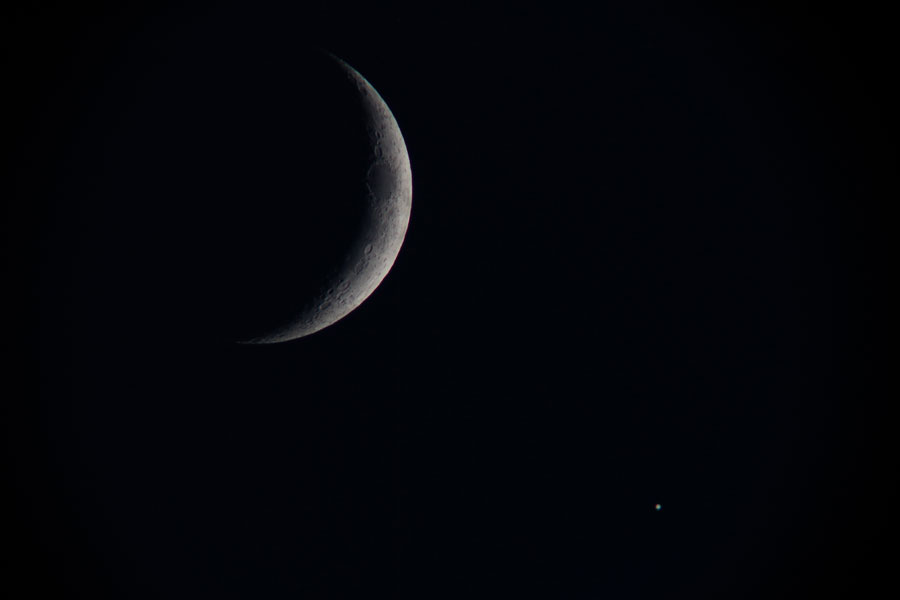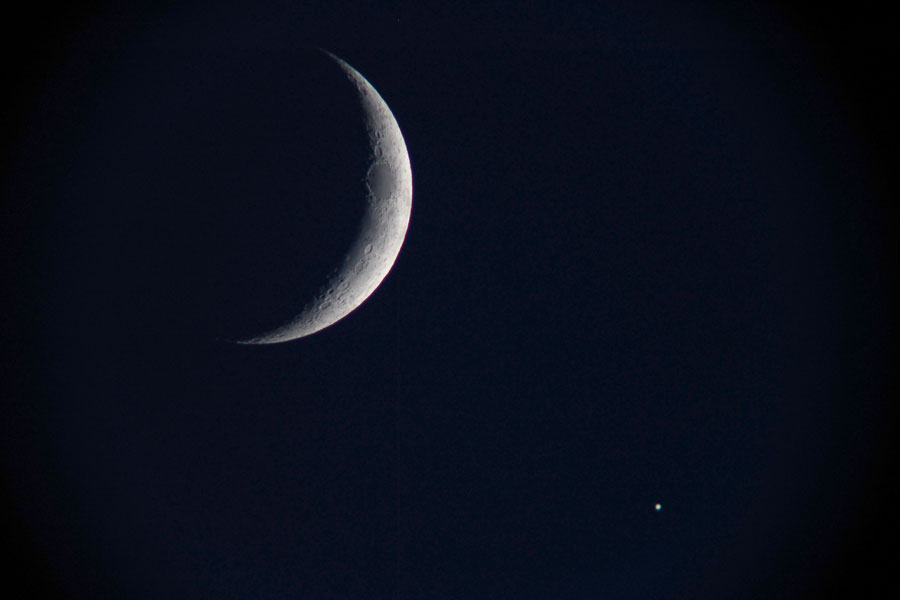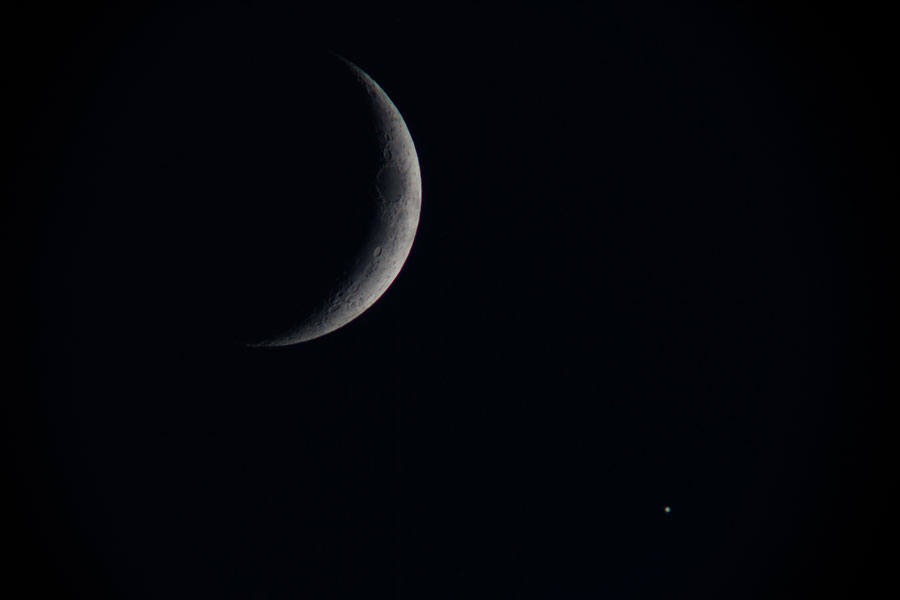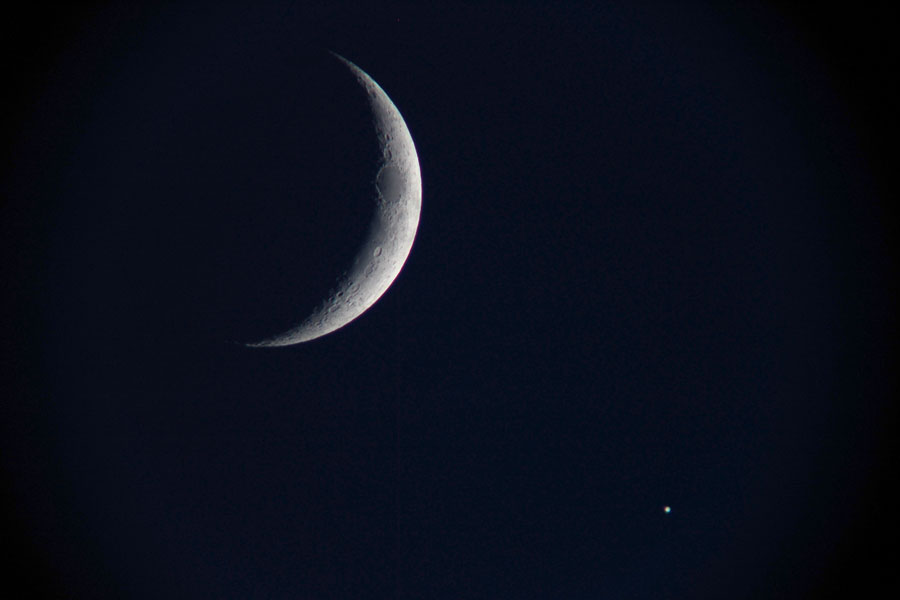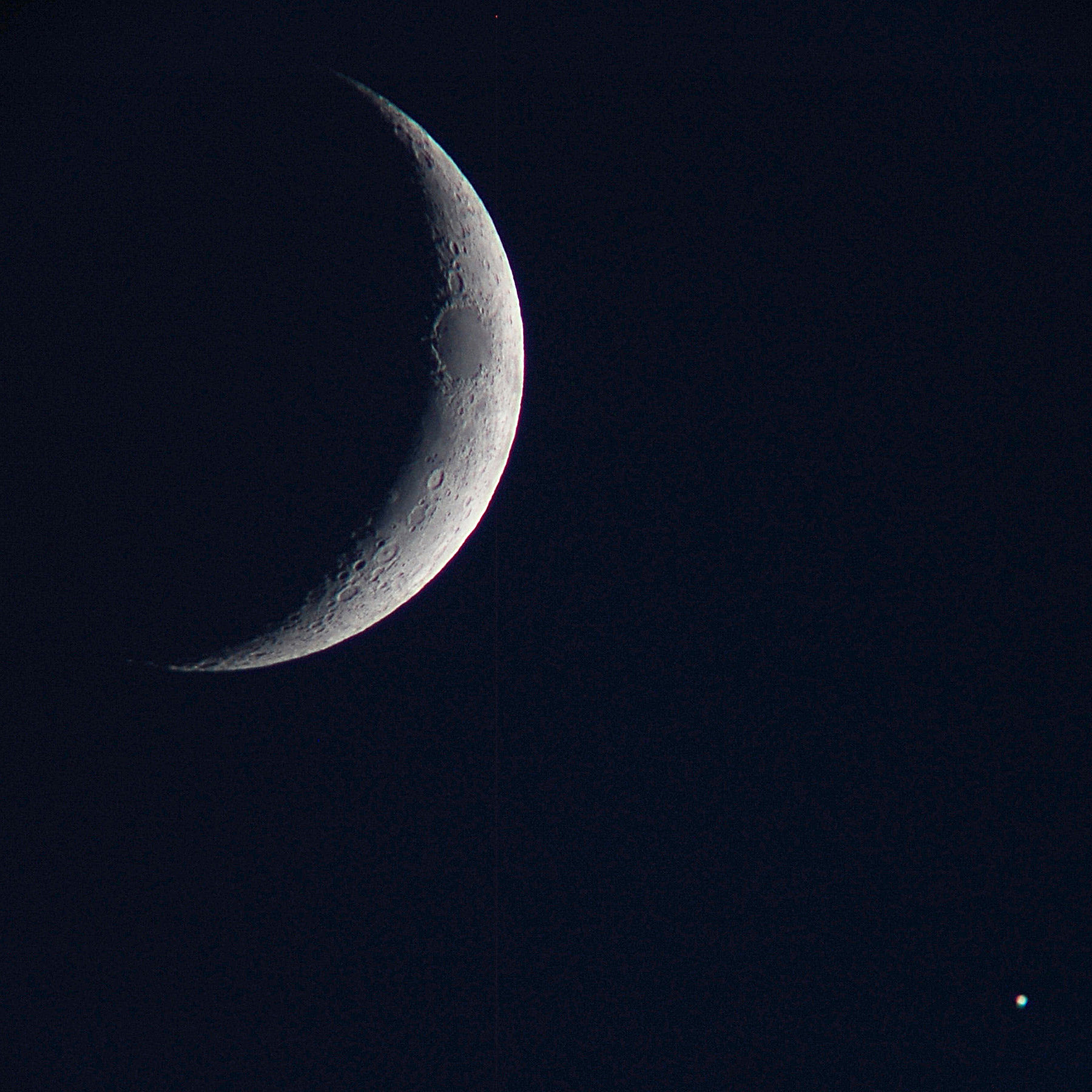Jupiter and Moon - End of October 2019 (Conjunction)
On October 31, 2019 the moon and Jupiter were in conjunction, that is, close to each other, which meant about 1.0° (= 2 moon diameters). We were not at home on that day, but in Erkerode/Elm near Braunschweig. I had taken a telescope with me, but unfortunately the wrong one, the long focal length Maksutov-Cassegrain Skymax-127 (1500 mm focal length), because even with my 32 mm eyepiece I could neither observe nor photograph the conjunction well.
Fortunately, I was able to photograph the conjunction sufficiently well with my Sony RX10 M4 camera. However, it was not possible to make the largest Jupiter moon Ganymed visible on photos together with the moon and Jupiter (it was, of course, visible in the telescope). Only if I brighten up one of the photos strongly, I can guess a tiny dot, which probably represents Ganymed. But the earth moon is then already strongly outshone.
I used the Skymax-127 on the Sky-Watcher AZ Pronto mount, but I neither attached the camera (Sony RX100 M4) to the eyepiece nor used a cable trigger. It should go just fast... The pictures with the Sony RX10 M4 were taken free hand, so there was again no effort!
For comparison purposes, I also present two photos, which were taken by my star friend in Southern Germany (Nikon D40, Sky-Watcher StarTravel 120/600).
The Surround...
Photo: View from the balcony on the Brocken with moon and Jupiter at the top right (Jupiter very small, in the larger version better to recognize); photo somewhat darkened, so that moon and Jupiter are better to see.
Photos - Skymax-127
The following photo (below, on the left) of the conjunction of Moon and Jupiter on October 31, 2019 is one of the better ones that I took and only serves to illustrate the situation. It shows the problem that I had with the Skymax-127: If I can still see Jupiter, I can only see a very small piece of the moon. That is why I only just held the camera up to the 32 mm eyepiece and did not bother for quality when taking the pictures.
Technical data: Magnification nearly 47 x, field of view 1.11° (a little more than 2 moon diameters)
A little later, I photographed the moon alone, but not in good quality either. This led to the idea to simulate the conjunction my merging two photos, the left one and a single photo of the moon. This collage (below, on the right) illustrates the conjunction, but I would not insist that this is the exact position of Jupiter; however, the distance between Jupiter and the moon is pretty much correct.
The following sketch created with SkySafari results in a distance of almost 1° 8' between the centers of the two celestial bodies:
At this distance, the conjunction should, according to the data, have fitted better into the field of view (1.11°) of the eyepiece. But I observe again and again that in practice the angles of view are (or appear to be) somewhat different than expected.
Photos - Sony RX10 M4
The following photos of moon and Jupiter were taken freehand with the Sony RX10 M4:
Photos - Nikon D40
The following two photos of the moon and Jupiter were taken in southern Germany near Stuttgart. My star friend took them with the Sky-Watcher Star-Travel 120/600 and a Nikon D40 (6 MP, APS-C), which was screwed to a SkyWatcher zoom eyepiece 8-24 mm with a T2 adapter (eyepiece set to 24 mm).
Photo data: Exposure 1/100 sec (from EXIF data), aperture f/5 set by the
telescope, ISO 400.
Observation location and time: South of Stuttgart, viewing direction
Southwest,
on October 31, 2019 at about 18 o'clock.
For a better recognition of the moon details, I present a section taken from the first shot in a larger format (1:1 pixels, if you click the photos for the large versions):
And here the same photo sharpened (perhaps a little too much...):
Photos: Section from the first photo of moon and Jupiter with StarTravel 120/600 and Nikon D40, flipped and brightened up (upper row), ditto sharpened (lower row) (about 18 o'clock; each of the larger version has 1800 x 1800 pixels)
Conclusions
After finding out that I had taken the wrong telescope with me, the Sony RX10 M4 still produced useful photos of the conjunction of moon and Jupiter. However, I was only able to detect the Jupiter moon Ganymed with the help of image processing...
My star friend's photos from Southern Germany are a welcome opportunity to compare my photos with photos from others.
| 15.01.2020 |
